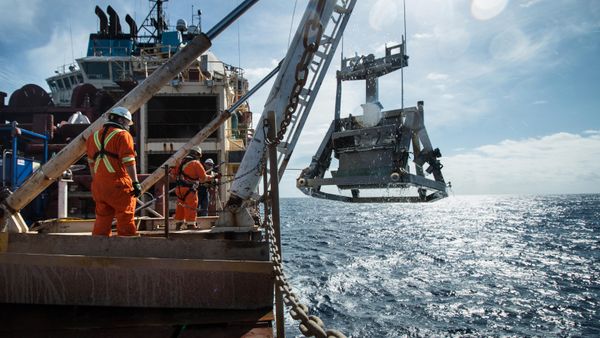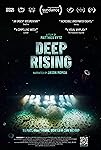Eye For Film >> Movies >> Deep Rising (2023) Film Review
Deep Rising
Reviewed by: Jennie Kermode

These days, practically everybody accepts the reality of climate change and the need for urgent action to be taken to develop solutions. The trouble is that developing any technology too quickly can lead to its environmental consequences being overlooked. That’s particularly risky when it comes to the deep ocean, because we still know very little about how its ecosystems operate, but what we do know is that they’re at the basis of global food chains and if we seriously damage them then we could be in very, very serious trouble.
Matthieu Rytz’s documentary spends some time addressing the broad context of this issue before focusing on one specific issue, a proposal to collect mineral nodules from an area of the ocean floor where they have gradually formed over thousands of years. They could be an extremely useful resource in the manufacture of batteries to help facilitate renewable power use, and acquiring them wouldn’t require any actual mining. There are two problems, however. Firstly, operating at such depths means relying on pretty crude robotic devices, so there’s no way to go about collecting them without destroying the top layer of sediment, which is teeming with microbial life and who knows what else. Secondly, if we destroy it and it turns out that it was important, it will take centuries for it to be replaced.

Rytz doesn’t spend much time on the fact that energy storage is a rapidly developing area and there might be much better solutions, so one hopes that viewers will already be aware of this. It may be a deliberate choice, because his point is that we need to avoid taking risks like this even if we’re desperate. Having Jason Momoa narrate adds a personal angle, as the actor has been prominent in efforts to protect the natural landscapes (and seascapes) of his native Hawaii. Like most islanders, he’s more attuned than continental dwellers to the fact that Earth is mostly ocean, and that ocean-dwelling life constitutes 95% of our total biosphere.
Momoa’s distinctive voice is also an asset, not least because it brings a suitably sinister weight to descriptions of the dark oceans as the hungriest and loneliest place in the world. Rather than focusing on its obvious wonders – those who fit the conventional beauty standards of humans – Rytz finds beauty in the strangeness of deep water creatures, inviting us to appreciate them on their own terms. There is a brief detour into reflections on sperm whales and the impact of whaling – significant, of course, because whale carcasses used to be a key source of sustenance for the deeps – before we explore the unique ecosystems around hydrothermal vents and, sadly, learn that they too are under threat.
Deep sea exploration is obviously very difficult, limiting the speed of knowledge-gathering. Rytz presents a solution in a visit to a desert which was once the bottom of the sea, allowing us to reflect on its fossil record. We get aerial views of ugly marine pollution, and there’s a look at how land-based mining threatens ocean ecosystems due to the effects of run-off.
Who should take responsibility for all this? There is relatively little law or governance. We hear John F Kennedy repeatedly talking about the sea as a resource to be exploited. We see indigenous resistance. Rytz associates the hunt for wealth on the ocean floor to the scramble for land and resources during the colonial era. He ends on a note of hope, looking at under-used surface resources. Can we get to grips with this problem and start focusing on the right solutions, rather than the easy but incredibly risky ones, before it is too late?
Reviewed on: 27 Oct 2023
















